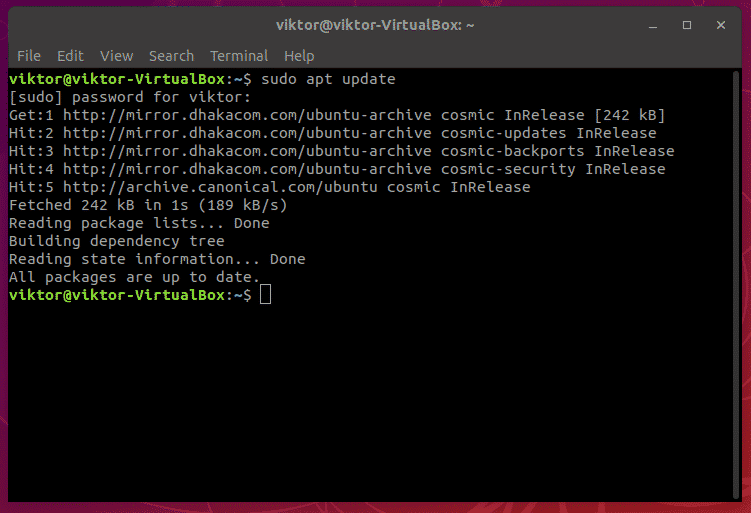

- #Windows terminal ubuntu color scheme software
- #Windows terminal ubuntu color scheme code
- #Windows terminal ubuntu color scheme windows
Select the newly created scheme and click the Edit button next to the “Add new” button.

To create a custom color scheme for the Terminal app, use these steps:
#Windows terminal ubuntu color scheme windows
In addition to the default colors, you can also create your custom Windows Terminal color schemes. Create Terminal color scheme from Settings Use the Ctrl + S keyboard shortcut to save the file.Īfter you complete the steps, the scheme will be reflected in the console. Otherwise, the settings may not save correctly.
#Windows terminal ubuntu color scheme code
Quick tip: If you have more than one line of code inside the bracket, ensure all the lines end with a comma (,) except for the last line. Under the “profiles” section, in the “lists” bracket, type the following line of code to change the color scheme for the command-line interface: "colorScheme": "Solarized Dark" To change the color scheme by editing the JSON file, use these steps: Change Terminal profile color scheme editing JSON file Use the Color scheme setting and select the color scheme for the Windows Terminal profile.Īfter you complete the steps, the color scheme will apply only to the profile. Under the “Additional settings” section, click the Appearance setting. Change Terminal profile color scheme from SettingsĬlick on the profile – for example, Command Prompt. Once you complete the steps, the selected color scheme will become the new default for every profile that doesn’t already have a defined scheme. Select the color scheme for Windows Terminal. Create Terminal color scheme from SettingsĬhange Terminal default color scheme from SettingsĬlick the menu (down-arrow) button and select the Settings option.Change Terminal profile color scheme editing JSON file.Change Terminal profile color scheme from Settings.Change Terminal default color scheme from Settings.This guide will teach you the steps to change the default color scheme for each Windows Terminal profile on Windows 11 or 10. If you use the Windows Terminal app, you can change the color scheme in several ways using the Settings interface or editing the Settings.json file directly with a code editor (such as Visual Studio Code). In contrast, a color scheme is a scheme of colors for the background, selection, cursor, foreground, and other elements, and they only apply to a specific profile. Here are all the available color schemes.On Windows Terminal, you can change the color scheme to make each console profile (such as for Command Prompt, PowerShell, WSL2, etc.) more fun and personal using one of the default options or custom schemes.Īlthough the names may be used interchangeably, a “theme” is not the same as a “color scheme.” The Windows Terminal defines a theme as a color system mode, which can be in two states (light or dark), affecting the entire application. Now, you can enjoy the built-in color schemes. Changing the terminal color schemeĪt first, uncheck the “Use colors from system theme”. As it’s a part of GNOME, it already contains a number of predefined color schemes. Ubuntu has finally shifted towards GNOME and the terminal is now from GNOME.
#Windows terminal ubuntu color scheme software
GNOME is a family of software that comes up with a powerful support and a large community. Let’s have a closer look at the Ubuntu terminal. Let’s change the terminal experience of Ubuntu terminal! The Ubuntu terminal The color scheme itself plays a big role. Now, the feel of the terminal is changeable dramatically. In the case of Ubuntu, there’s the classic Ubuntu terminal view we all know of and love. It allows you to perform a ton of works and obviously, there are some tasks that you can’t complete with GUI. On every Linux distro, the terminal is a big player.

There are tons of things to do with Ubuntu. Ubuntu is, by default, one of the best choices for new and general Linux users because of its simplicity, powerful environment and a robust support and the community behind it.


 0 kommentar(er)
0 kommentar(er)
